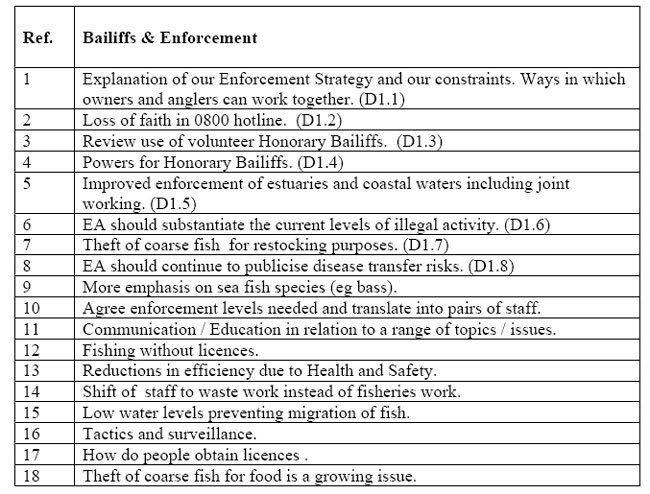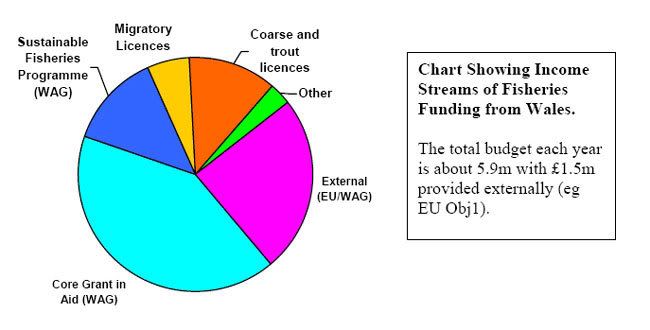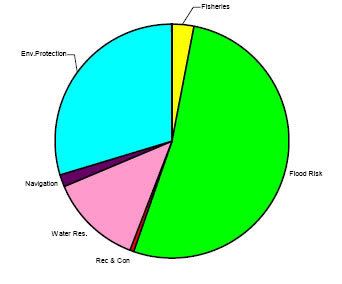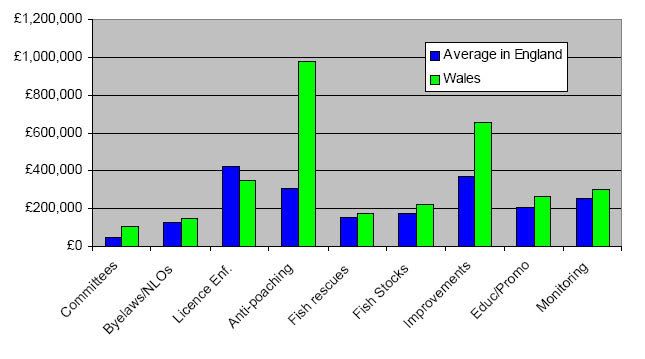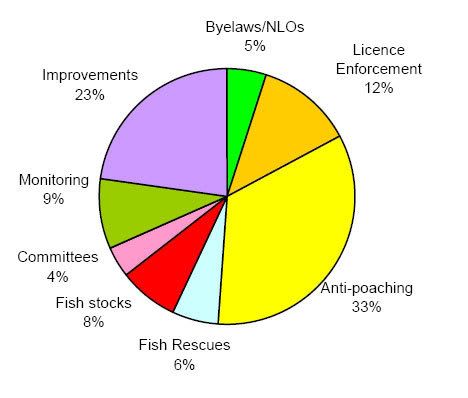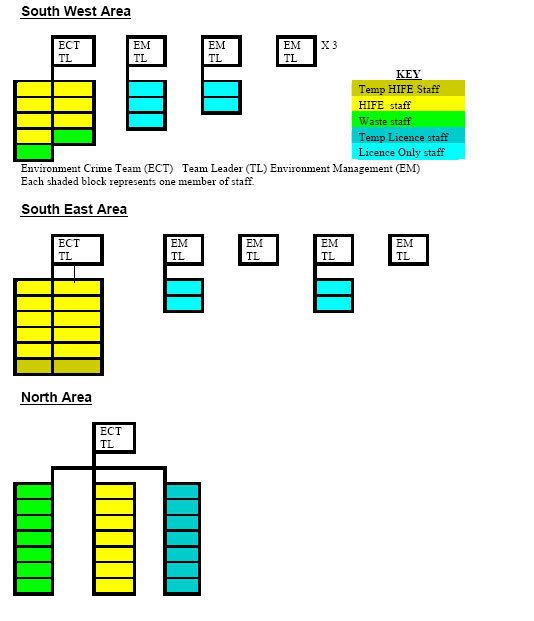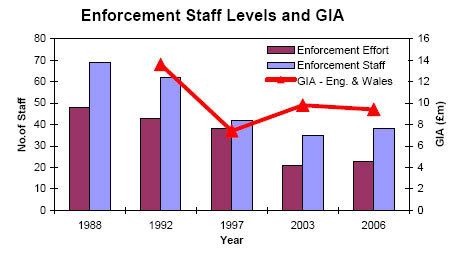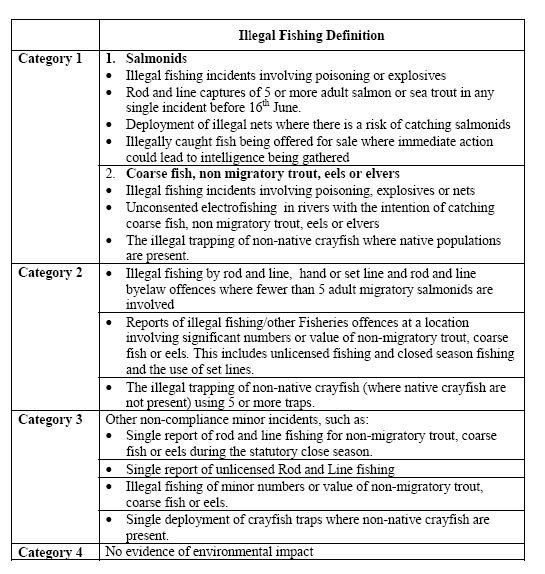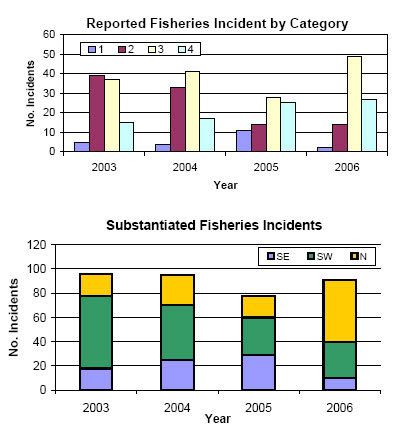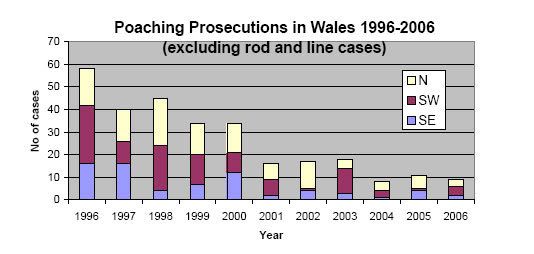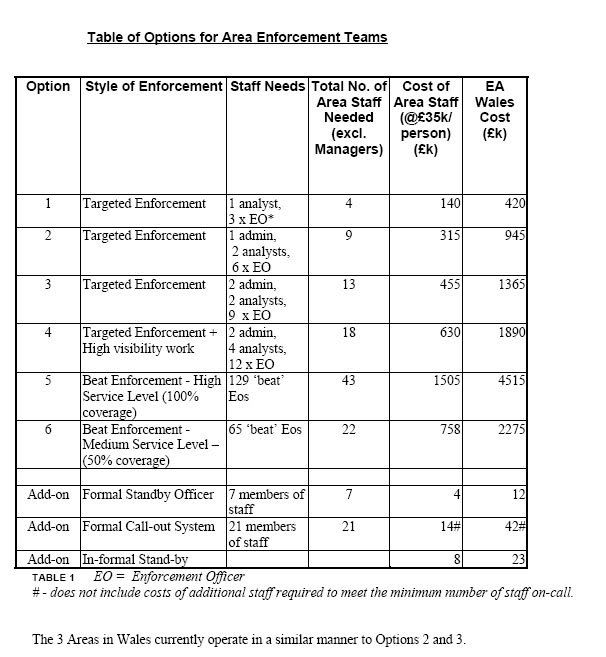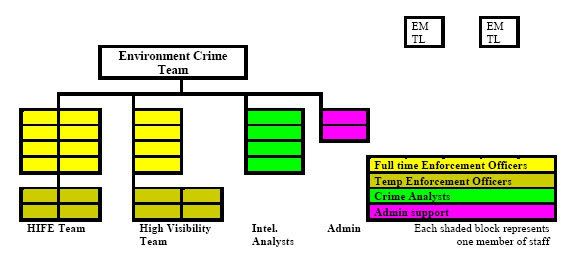Post by Hoppy on Nov 18, 2007 18:01:55 GMT -1
Report produced for Welsh Assembly Government, April 2007
Enforcement Review Report
Contents
Executive Summary
Part 1
1.0 Introduction
2.0 Background
3.0 Review Process
Part 2
4.0 Stakeholders Concerns
Part 3
5.0 Sources of Funding
6.0 Delivery of Fisheries Work
7.0 Activities of Enforcement Teams
8.0 Monitoring/ Measuring / Recording
9.0 Estimating Level of Illegal Activity
10.0 Customer Communications
Part 4
11.0 Proposed solutions
12.0 Funding Future Work
13.0 Conclusion
14.0 Appendices
Appx A – Inland Fisheries Stakeholder Report Recommendations
Appx B - Outputs from External Workshops
Appx C – Output from Internal Workshop
Appx D – Key Performance Indicators
Appx E – Illegal Exploitation Estimates
Appx F – Tables of Recommended Actions – Ordered by Theme
Appx G – Tables of Recommended Actions – Ordered by Cost and Timescale
Appex H – Other on-going reviews
Acronyms Used in Report
AEP - Area Enforcement Plan
BRITE – Better Regulation Improving the Environment
CEFAS – Centre for Environment, Fisheries and Aquaculture Science
CICS – Common Incident Classification Scheme
EA – Environment Agency
ECT – Environment Crime Team (aka Special Enforcement)
EM – Environment Management
EU – European Union
FERAC – Fisheries, Ecology, Recreation Advisory Committee
FTE - Full Time Equivalent (= 1 person for 1 year)
GIA – Grant in Aid
HIFE – High Impact Fisheries Enforcement
ICES – International Council for the Exploration of the Seas
IFSG – Inland Fisheries Stakeholder Group
ILE – Intelligence Led Enforcement
KPI – Key Performance Indicator
NIRS – National Incident Recording System
NRA – National Rivers Authority
RCC – Regional Control Centre
SAFFA – Salmon and Freshwater Fisheries Act, 1975
SFP - Sustainable Fisheries Programme
WAG – Welsh Assembly Government
Executive Summary
Background
Following instruction from the Welsh Assembly Government, we have reviewed and reported on our existing fisheries enforcement activities and organisational structures. We have also sought the views of our customers on how they would like us to improve our current fisheries enforcement provision.
Fisheries enforcement receives the greatest proportion of our fisheries funding with 45% (£1.33m) of our operational budget allocated to High Impact Fisheries Enforcement and rod and net licence checking.
This Review has provided the opportunity to share good practice across Wales, develop new ideas and identify areas for improvement in our existing enforcement work. It has also provided an opportunity to rectify some perceptions regarding our work, for example, that we are a ‘blue-light’ service able to respond 24 hours-a-day, 365 days a year or that the Fisheries Function is financing waste enforcement work – both of which are inaccurate.
Key Findings
Following the receipt of nearly 1000 comments from external stakeholders and our own staff, we have been able to identify over 80 possible improvement actions. Many of these actions will not require additional resource in order to implement, although phased introduction will be necessary.
Several actions have already been implemented, including: a change in the Agency policy in relation to fish theft; a review of the Regional Control Centres which will result in the retention of a
dedicated centre for Wales; provision of a Fisheries Standby Officer in N.Wales. Our communication with customers has also improved through Area Newsletters – although there is still
more to be done in this important area of work.
Based upon current levels of funding provided by the Assembly we have identified and costed actions to deliver improvements to our enforcement service. These actions include the provision of
an Intelligence Database, improved radio communication systems, training schemes for a new network of volunteer ‘ River Watchers’ and increased staff numbers (both full and part-time). The total cost if all actions are implemented would be £944k with a minimum of £490k required annually thereafter to cover salary and other costs.
However, before significant additional investment is made, we believe that further research is required in order to quantify the level of illegal fishing. We estimate, for the first time, the illegal
capture of salmon and sea trout in Wales to be 2.29 and 2.76 tonnes respectively. The assumptions used to calculate these figures require further testing and their accuracy may need to be improved but they do provide our enforcement teams with a new target against which their future effectiveness could be measured.
The following table provides a brief summary of the possible areas for improvement identified and estimated costs of implementation.

Future Actions
We therefore recommend that the next steps to delivery should be :
(i) Deliver some low cost actions, within our existing budgets that will bring about increased protection for our fisheries and an improved service to our customers.
(ii) Produce an initial Fisheries Enforcement Strategy for Wales supported by customers and partner organisations. This will consider :
• Current level of illegal activity ?
• How best to combat this threat ?
• The approach taken by other enforcement agencies and their lessons learnt.
• How future levels of activity may change and proposals to pre-empt such changes ?
• How much resource is required and how this is best deployed ?
(iii) Produce a Fisheries Communications Strategy to improve our communications with the public and partner organisations.
(iv) Research and develop agreed techniques for quantifying illegal activity to give a true indication of the level of illegal fishing activity.
(v) In light of the results from (iv) above re-evaluate our Enforcement and Communications
Strategies.
(vi) Seek necessary funding and bid for additional funds from WAG at the appropriate time.
This will require wider debate about the level of resource allocation for enforcement work in relation to other areas of fisheries work.
Enforcement Review Report
Contents
Executive Summary
Part 1
1.0 Introduction
2.0 Background
3.0 Review Process
Part 2
4.0 Stakeholders Concerns
Part 3
5.0 Sources of Funding
6.0 Delivery of Fisheries Work
7.0 Activities of Enforcement Teams
8.0 Monitoring/ Measuring / Recording
9.0 Estimating Level of Illegal Activity
10.0 Customer Communications
Part 4
11.0 Proposed solutions
12.0 Funding Future Work
13.0 Conclusion
14.0 Appendices
Appx A – Inland Fisheries Stakeholder Report Recommendations
Appx B - Outputs from External Workshops
Appx C – Output from Internal Workshop
Appx D – Key Performance Indicators
Appx E – Illegal Exploitation Estimates
Appx F – Tables of Recommended Actions – Ordered by Theme
Appx G – Tables of Recommended Actions – Ordered by Cost and Timescale
Appex H – Other on-going reviews
Acronyms Used in Report
AEP - Area Enforcement Plan
BRITE – Better Regulation Improving the Environment
CEFAS – Centre for Environment, Fisheries and Aquaculture Science
CICS – Common Incident Classification Scheme
EA – Environment Agency
ECT – Environment Crime Team (aka Special Enforcement)
EM – Environment Management
EU – European Union
FERAC – Fisheries, Ecology, Recreation Advisory Committee
FTE - Full Time Equivalent (= 1 person for 1 year)
GIA – Grant in Aid
HIFE – High Impact Fisheries Enforcement
ICES – International Council for the Exploration of the Seas
IFSG – Inland Fisheries Stakeholder Group
ILE – Intelligence Led Enforcement
KPI – Key Performance Indicator
NIRS – National Incident Recording System
NRA – National Rivers Authority
RCC – Regional Control Centre
SAFFA – Salmon and Freshwater Fisheries Act, 1975
SFP - Sustainable Fisheries Programme
WAG – Welsh Assembly Government
Executive Summary
Background
Following instruction from the Welsh Assembly Government, we have reviewed and reported on our existing fisheries enforcement activities and organisational structures. We have also sought the views of our customers on how they would like us to improve our current fisheries enforcement provision.
Fisheries enforcement receives the greatest proportion of our fisheries funding with 45% (£1.33m) of our operational budget allocated to High Impact Fisheries Enforcement and rod and net licence checking.
This Review has provided the opportunity to share good practice across Wales, develop new ideas and identify areas for improvement in our existing enforcement work. It has also provided an opportunity to rectify some perceptions regarding our work, for example, that we are a ‘blue-light’ service able to respond 24 hours-a-day, 365 days a year or that the Fisheries Function is financing waste enforcement work – both of which are inaccurate.
Key Findings
Following the receipt of nearly 1000 comments from external stakeholders and our own staff, we have been able to identify over 80 possible improvement actions. Many of these actions will not require additional resource in order to implement, although phased introduction will be necessary.
Several actions have already been implemented, including: a change in the Agency policy in relation to fish theft; a review of the Regional Control Centres which will result in the retention of a
dedicated centre for Wales; provision of a Fisheries Standby Officer in N.Wales. Our communication with customers has also improved through Area Newsletters – although there is still
more to be done in this important area of work.
Based upon current levels of funding provided by the Assembly we have identified and costed actions to deliver improvements to our enforcement service. These actions include the provision of
an Intelligence Database, improved radio communication systems, training schemes for a new network of volunteer ‘ River Watchers’ and increased staff numbers (both full and part-time). The total cost if all actions are implemented would be £944k with a minimum of £490k required annually thereafter to cover salary and other costs.
However, before significant additional investment is made, we believe that further research is required in order to quantify the level of illegal fishing. We estimate, for the first time, the illegal
capture of salmon and sea trout in Wales to be 2.29 and 2.76 tonnes respectively. The assumptions used to calculate these figures require further testing and their accuracy may need to be improved but they do provide our enforcement teams with a new target against which their future effectiveness could be measured.
The following table provides a brief summary of the possible areas for improvement identified and estimated costs of implementation.

Future Actions
We therefore recommend that the next steps to delivery should be :
(i) Deliver some low cost actions, within our existing budgets that will bring about increased protection for our fisheries and an improved service to our customers.
(ii) Produce an initial Fisheries Enforcement Strategy for Wales supported by customers and partner organisations. This will consider :
• Current level of illegal activity ?
• How best to combat this threat ?
• The approach taken by other enforcement agencies and their lessons learnt.
• How future levels of activity may change and proposals to pre-empt such changes ?
• How much resource is required and how this is best deployed ?
(iii) Produce a Fisheries Communications Strategy to improve our communications with the public and partner organisations.
(iv) Research and develop agreed techniques for quantifying illegal activity to give a true indication of the level of illegal fishing activity.
(v) In light of the results from (iv) above re-evaluate our Enforcement and Communications
Strategies.
(vi) Seek necessary funding and bid for additional funds from WAG at the appropriate time.
This will require wider debate about the level of resource allocation for enforcement work in relation to other areas of fisheries work.



